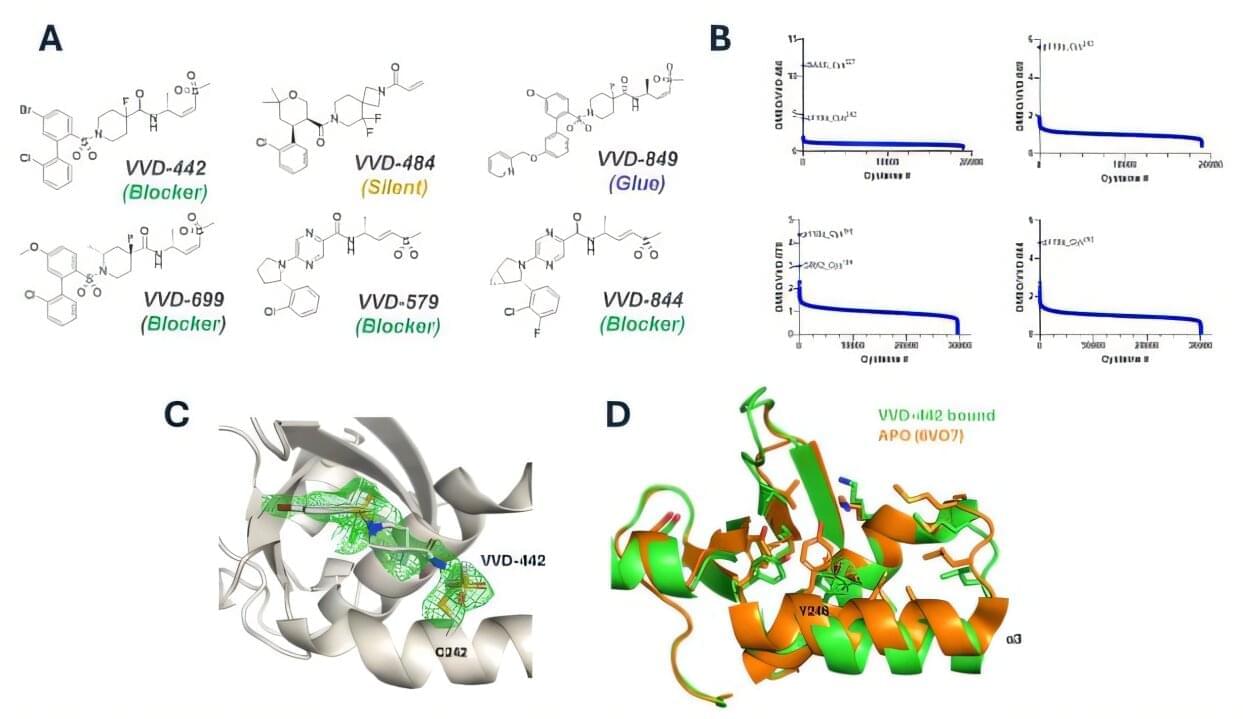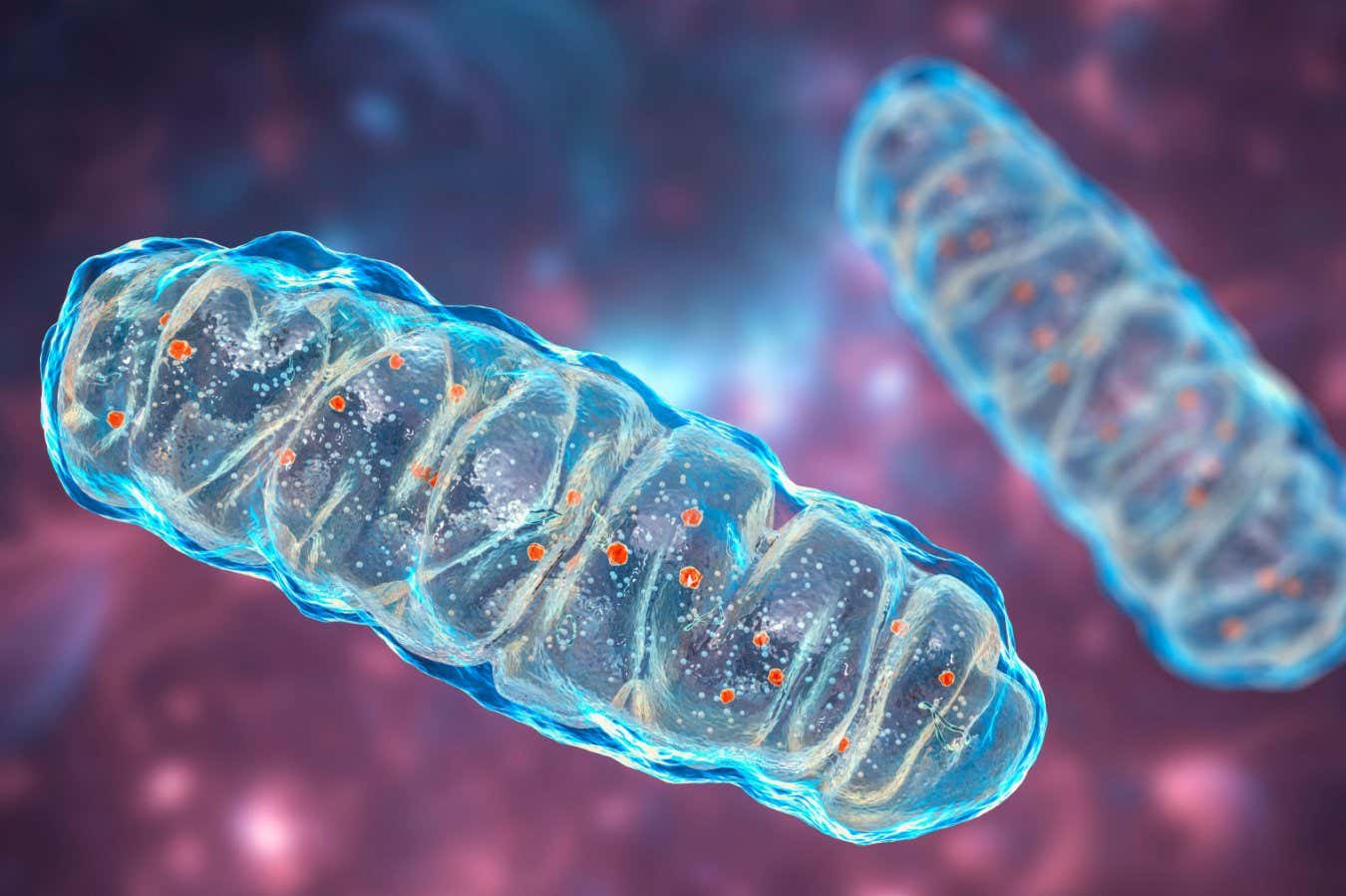The neutral-atom platform appears promising for scaling up quantum computers. To solve some of the toughest challenges in physics, chemistry, and other fields, quantum computers will eventually need extremely large numbers of qubits. Unlike classical bits that can only represent a 0 or a 1, qubits
Category: chemistry – Page 19

Experimental drug findings pave way for clinical trial to target cancer’s elusive growth switch
Researchers at the Francis Crick Institute and Vividion Therapeutics have identified chemical compounds that can precisely block the interaction between the major cancer-driving gene RAS and a key pathway for tumor growth.
Now entering the first clinical trial in humans, if found to be safe and effective, these drugs could be used to treat many different types of cancers while avoiding effects on healthy cells.
A gene called RAS, which kickstarts cell growth pathways, is mutated in around one in five cancers. Mutated versions of the gene lock the RAS protein in an activated state, telling the cancer cell to keep growing bigger and keep dividing.
Dr. Aliza Apple, Ph.D. — VP, Catalyze360 AI/ML and Global Head, Lilly TuneLab, Eli Lilly
Accelerating Promising Biotech Innovation — Dr. Aliza Apple, Ph.D. — Vice President, Catalyze360 AI/ML and Global Head, Lilly TuneLab, Eli Lilly and Company.
Dr. Aliza Apple, Ph.D. is a Vice President of Catalyze360 AI (https://www.lilly.com/science/partners/catalyze-360 and Global Head of Lilly TuneLab (https://tunelab.lilly.com/) at Eli Lilly where she leads the strategy, build and launch of Lilly’s external-facing AI/ML efforts for drug discovery.
Lilly Catalyze360 represents a comprehensive approach to enabling the early-stage biotech ecosystem, agnostic of the therapeutic area, designed to accelerate emerging and promising science, strategically removing barriers to support biotech innovation.
In her previous role at Lilly, Dr. Apple served as the COO and head of Lilly Gateway Labs West Coast, where she supported the local biotech ecosystem through early engagement and providing tailored offerings to meet their needs.
Prior to Lilly, Dr. Apple served as a co-founder at Santa Ana Bio, a venture-backed precision biologics company focused on autoimmune disease, and as an advisor to the founders of Firefly Biologics.


Researchers discover a hidden atomic order that persists in metals even after extreme processing
For decades, it’s been known that subtle chemical patterns exist in metal alloys, but researchers thought they were too minor to matter—or that they got erased during manufacturing. However, recent studies have shown that in laboratory settings, these patterns can change a metal’s properties, including its mechanical strength, durability, heat capacity, radiation tolerance, and more.
Now, researchers at MIT have found that these chemical patterns also exist in conventionally manufactured metals. The surprising finding revealed a new physical phenomenon that explains the persistent patterns.
In a paper published in Nature Communications today, the researchers describe how they tracked the patterns and discovered the physics that explains them. The authors also developed a simple model to predict chemical patterns in metals, and they show how engineers could use the model to tune the effect of such patterns on metallic properties, for use in aerospace, semiconductors, nuclear reactors, and more.

Research shines light on ‘double-yielding’ behavior in soft materials
For decades, scientists have observed, but been unable to explain, a phenomenon seen in some soft materials: When force is applied, these materials exhibit not one, but two spikes in energy dissipation, known as overshoots. Because overshoots are generally thought to indicate the point at which a material yields, or transitions from solid-like to fluid-like behavior, the dual response was therefore assumed to indicate “double yielding”—the idea that to fully fluidize a material, it needed to yield twice.
Now, researchers at the University of Illinois Urbana-Champaign have shown that this behavior is different than previously hypothesized. Their paper, “Resolving Dual Processes in Complex Oscillatory Yielding,” is published in Physical Review Letters.
In the study, chemical and biomolecular engineering professor Simon A. Rogers and his team, led by then-graduate student James J. Griebler show that the two-step response is the result of two independent processes: first, a softening of the material’s elastic structure, and later, true yielding.

Nobel Prize in Chemistry awarded “for the development of metal–organic frameworks” | DW News
The Royal Swedish Academy of Sciences has decided to award the 2025 Nobel Prize in chemistry to Susumu Kitagawa, Richard Robson and Omar M. Yaghi \.


Astronomers discover the most ‘pristine’ star in the known universe
Not all stars are created equally. Astronomers believe that the first stars to form after the Big Bang were mostly made of only hydrogen and helium with trace amounts of lithium, as the heavier elements formed later on by nuclear fusion inside the stars. When these stars went supernova, heavier elements spread throughout space and formed more stars. Each successive generation contained more heavy elements, and these elements also became successively heavier.
While most stars still contain mostly hydrogen and helium, they now contain many heavy elements as well, especially as they get older. These elements show up in spectrographic data when astronomers gather light from these distant stars. Stars are considered “pristine” when the data shows a lack of heavy elements—meaning they are likely very rare, older stars from earlier generations. And now, a group of astronomers, led by Alexander Ji from the University of Chicago, believe they have found the most pristine star on record. The group has documented their findings on the arXiv preprint server.
The star, referred to as SDSS J0715-7334, is a red giant purported to have the lowest metallicity—or heavy element content—ever found. The team’s detailed spectral and chemical analysis shows that SDSS J0715-7334 has a total metallicity “Z” of less than 7.8 × 10-7. This is compared to the next lowest metallicity star currently known, a star located in the Milky Way with a total metallicity of around 1.4 × 10-6.